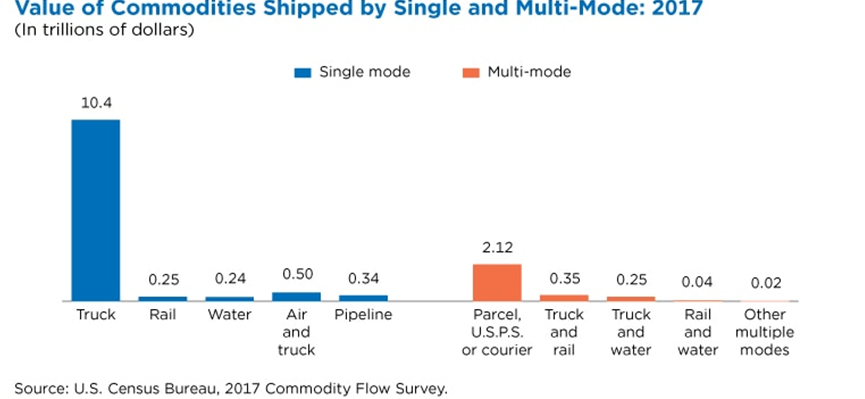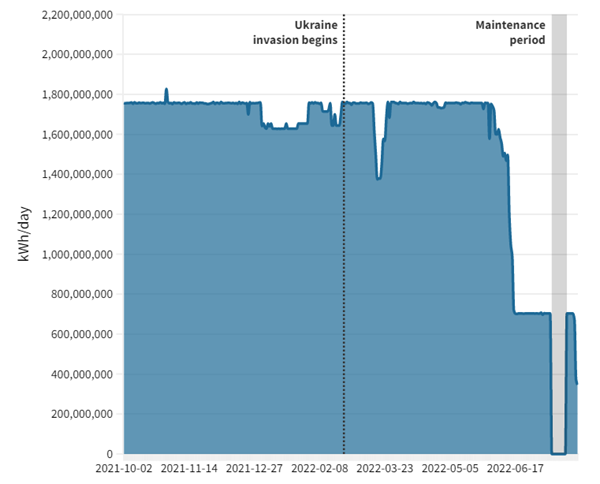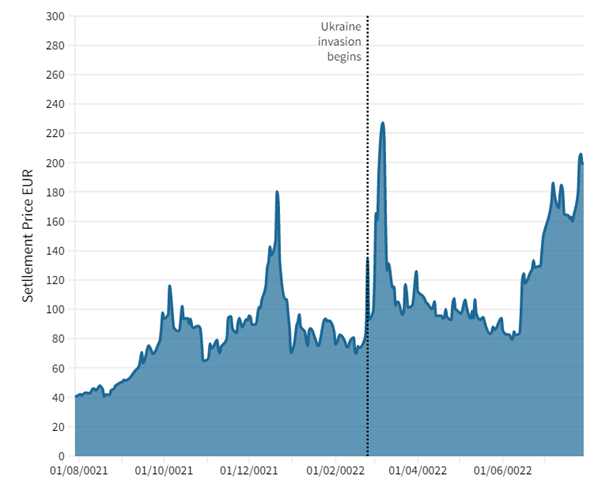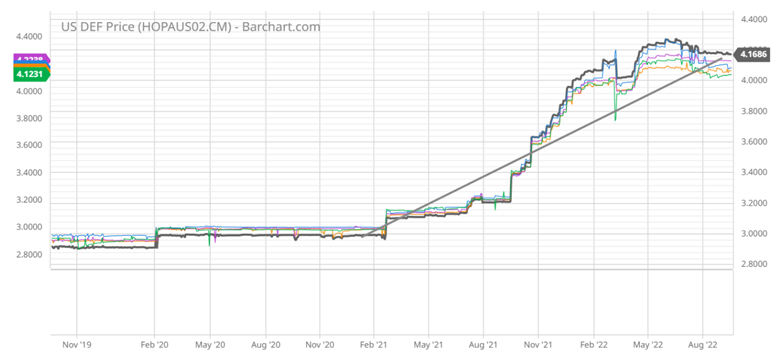Unintended Consequences Of Interconnected Supply Chains

Supply chain issues within a single industry are complicated. However, inextricably linking two industries together causes major issues and unintended consequences as the complications between agriculture and energy plague each other.
It’s commonly known most goods that Americans use in their lives are transported and delivered by truck. According to the U.S. Census Bureau’s latest Commodity Flow Survey, trucks transported 71.6% or $10.4 trillion of the $14.5 trillion value of all goods moved in the U.S. in 2017.
Without trucks, our supply chains would falter. The COVID pandemic taught the world the importance of this portion of the supply chain based on the high visibility of issues associated with trucking. With 71% of the U.S. economy’s products being moved by truck, we’re extremely reliant on this mode of transportation.

Solving A Supply Chain Issue: Emissions
The fuel and engines for trucking have evolved over the years. Today, diesel engines are more efficient and reliable than in the past. Diesel engines provide high torque at lower RPM, thereby allowing for greater efficiency in hauling heavy loads. Before 2008, diesel engines had a major environmental issue. When diesel exhaust is left untreated, it emits an enormous amount of diesel particulates and nitrogen oxides (NOx), both of which cause undesirable environmental damage. In 2008, the EPA mandated that diesel particulate filters (DPFs) be installed on all trucks larger than a three-quarter ton. By 2010, a new technology emerged that further drove efficiency and cleanliness for diesel fuel—diesel exhaust fluid (DEF) with selective catalytic reduction (SCR).
READ MORE: Shocking The Supply Chain: How The Threat Of Rail Strikes Exposes The Weakness Of Logistics
The technology continued to evolve for a tight coupling of emission reduction and engine performance. Manufacturers incorporated new technology designed to stop diesel engines from working if the DEF runs dry. In other words, depending on the truck, the engine performance will either be greatly reduced (not drive faster than 5 mph) or cause the engine to freeze up.
Based on the results of reducing emissions and toxic gases, the U.S. Environmental Protection Agency (EPA) and governments worldwide adopted its usage. According to the EPA, since the adoption of DEF/SCR technology, emissions have fallen by 40%. The Diesel Exhaust and Diesel Emissions Reduction Act of 2008 is arguably one of the most impactful environmental interventions of our time.
Linking DEF & Agriculture
DEF is made using a mixture of 32.5% urea and 67.5% distilled water. Urea is manufactured by reacting ammonia with CO2. This sounds innocuous until you realize that ammonia is also used throughout the world to make nitrogen-rich fertilizers. So, on its face, DEF production must compete with the growing demand for fertilizer.
The traditional ammonia production process utilizes fossil fuels for feedstock. Primary among those is natural gas. Utilizing the Haber-Bosch process, CO2 is removed from methane to produce the necessary ammonia. This DEF production process works well, so long as there is an abundant supply of cheap urea. Cheap urea is available when natural gas prices are low and natural gas is readily available in production.
Unintended Consequence Of Global Events
Natural gas is a common feedstock that has enjoyed relatively low prices. All that changed when Russia invaded Ukraine in February 2022, kicking off a series of political events that have led to natural gas shortages in Europe. The largest natural gas pipeline was curtailed, dropping supplies into Europe.
Gas Supplies Fall At Nord Stream 1

With a reduction in supplies greater than a demand reduction, European natural gas prices increased dramatically to provide a new equilibrium. Recently, gas transmission via the Nord Stream gas pipeline has been fully shut down, Gazprom revealed in a statement posted on its Twitter page late on September 2.
European Gas Prices Rise Based On War

The result then becomes rationing and prioritizing existing supply levels to be directed toward more critical needs. In this case, since natural gas is predominantly used for heating purposes, the shift is away from ammonia production and toward storage for the looming winter. Norway’s Yara, the world’s largest fertilizer company, announced in August that it would be cutting ammonia utilization down to 35%, citing “record high gas prices.”
READ MORE: Myth vs. Reality: First Steps In Supply Chain Optimization
Additionally, it’s been recently reported that Germany is facing a shortage of AdBlue as soaring energy prices are sending shockwaves through the economy. Truckers say suppliers are limiting deliveries of AdBlue, while some orders to gas stations are being cut, according to industry groups.

That rationing of ammonia production brings the story back to U.S. truck transportation—now dependent on and influenced by DEF price and availability. The above graph shows the overall results of the upward spike in U.S. DEF futures prices, as well as each of the DEF prices for the PADDs.
Managing A New Supply Chain Future
In the name of efficiency, we’ve created a significant interconnectedness between primary energy and agriculture markets. Much like growing corn to burn ethanol in cars and growing soybeans to produce biodiesel and renewable diesel, we are cross-linking more and more industries. By continuing to increase the interconnected nature of these seemingly unrelated sectors, we’re creating a new reality for how to manage supply chains.
READ MORE: Revenue Enhancement: Gain Insight Into Your Supply Chain To Make Money
Take action to map out the supply chain. Trace the feedstocks and inputs back upstream and seek to identify critical factors that drive production. Evaluate, where possible, any optionality that may help to prevent issues in the future. Practitioners need to be cognizant of new markets and world events on a constant, vigilant basis. Otherwise, we face the consequences of creating tunnels through which the contagion of crisis in one market bleeds directly into the other.
About The Expert
Patrick Long is a Director in Opportune LLP’s Process & Technology practice based in Houston. Patrick has over 20 years of experience in providing clients with energy trading and risk management, packaged software implementation, trading and risk processes, and business process automation. Patrick focuses his time on studying supply chain issues and implementing optimization. He helps transform capabilities from non-existent to best-of-breed solutions. His current focus for clients is making sense of inventory and the supply chain to address management questions. He enjoys thinking of ways to thwart irrational human behavior and its effects on optimization. Before Opportune, Patrick worked in the energy consulting trading and risk systems practice at Accenture where he managed project teams through the entire process of software selection to the successful implementation of trading and risk management systems for energy trading entities.
Related Insights
Our experts are here
for you.
When you choose Opportune, you gain access to seasoned professionals who not only listen to your needs, but who will work hand in hand with you to achieve established goals. With a sense of urgency and a can-do mindset, we focus on taking the steps necessary to create a higher impact and achieve maximum results for your organization.
LeadershipGeneral Contact Form
Looking for expertise in the energy industry? We’ve got you covered.
Find out why the new landmark legislation should provide a much-needed boost for the development of carbon capture.




